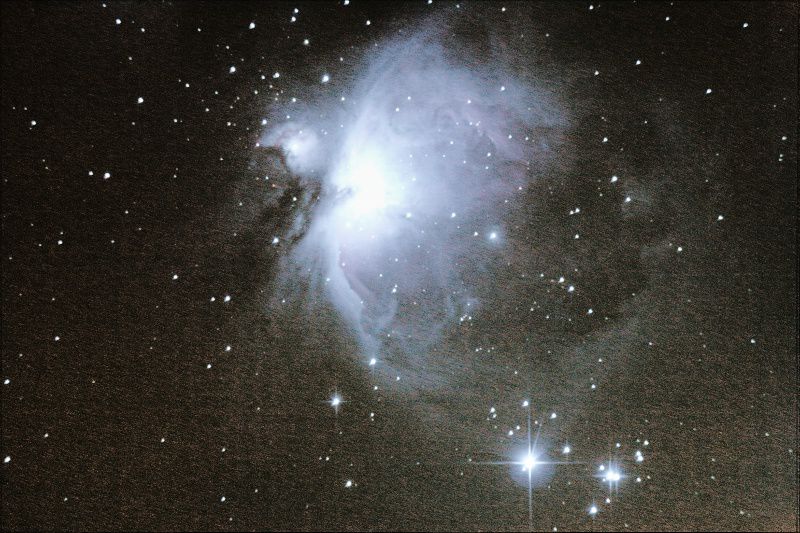First observation of the Great Orion Nebula, in Orion’s sword. Orion’s sword can be seen naked eye as the 3 stars in a line dangling below Orion’s belt. With binoculars, and even with the naked eye, especially under darker skies, a faint blueish nebulosity or mist can be seen around the middle star of the sword, and this is the Great Orion Nebula, catalogued by Messier in 1769, and now known as M42.
The view in the telescope jumps out at you. This huge cloud of gas, some 40 lights years across is illuminated by a grouping of 4 stars in the centre of the sword – Theta Orionis. I could immediately see a turquoise hue, something I was not expecting, but subsequent reference shows that greens and reds are visible with this nebula.
Despite not having planned to do any photography this evening, this was too tempting to resist, especially knowing that a long exposure photograph would bring out more detail. It’s a fairly rough and ready image, as I didn’t bother to take all the required types of calibration image. Curiously, the turquoise hue visible through the telescope does not show, rather, the blueish hue visible through binoculars is more prominent. The whole sword area is very complex, and I shall be re-visiting on several occasions I suspect, for further study!

Imaging Data:
Canon EOS 300D at prime focus
5 x 120 second unguided sub-exposures giving a total of 10 mins exposure
For calibration/noise reduction:
2 dark frames
10 flat frames shot at twilight (from a prior shoot)
10 bias/offset frames
all stacked in DeepSkyStacker
Levels, curves, saturation adjustment in DeepSkyStacker
